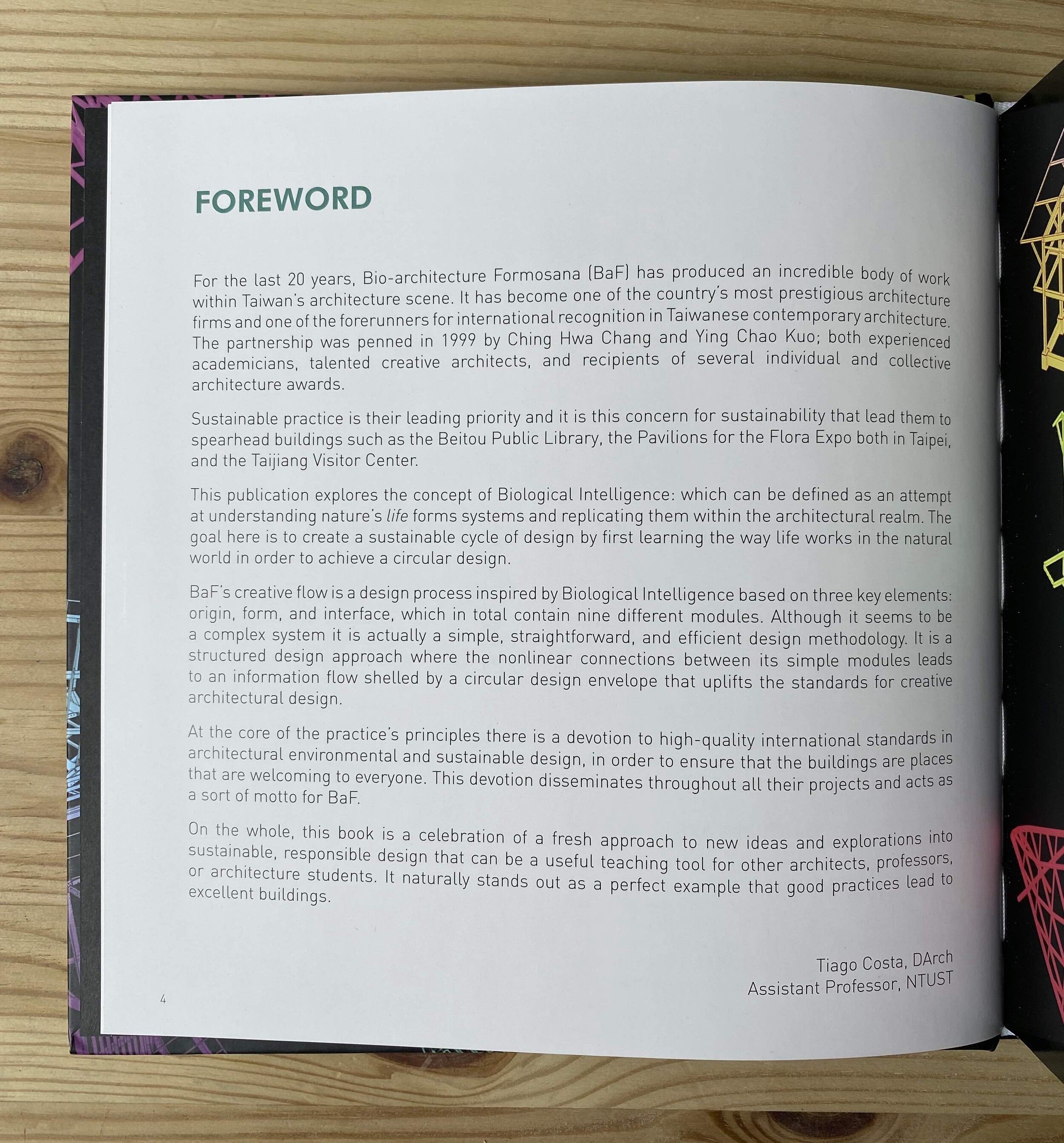BI: The Origin of Architectural Creativity book BY BIO ARCHITECTURE FORMOSANA
The architecture firm Bio Architecture Formosana (BaF) produced a book that explores their unique design approach to the architectural project. Ching Hwa Chang and Ying Chao Kuo were the authors, Ana Coelho was the editor and graphic designer, and Tiago Costa was invited to write the foreword.
“For two decades, Bio Architecture Formosana (BaF) has produced an incredible body of work within Taiwan’s architecture scene. It has become one of the country’s most prestigious architecture firm and one of the forerunners for the international recognition of the Taiwanese contemporary architecture.
The partnership was founded in 1999 by Ching Hwa Chang and Ying Chao Kuo, who are both experienced academicians, great innovative figures and recipients of several individual and collective architecture awards.
Sustainable practice is their major concern and it is this uneasiness regarding sustainability that lead them to spearhead buildings such as the Beitou Public Library, the Pavilions for the Flora Expo both in Taipei and the Taijiang Visitor Center.
BaF’s work varies immensely and touches totally different building typologies such as train stations, hospitals, hotels, offices, libraries, markets, schools, universities, green buildings and residential developments.
This publication explores the idea of Biological Intelligence, which is an attempt of understanding nature’s life forms systems and replicate them within the architecture realm. The goal is to create a sustainable cycle of design by learning the way life works in the natural world in order to achieve a circular design.
Their creative flow is a design process inspired by Biological Intelligence based on three key elements: origin, form and interface, which in total contain nine different modules. Although it seems to be a complex system it is simply straightforward and efficient design methodology. It is a structured design approach where the nonlinear connections between its simple modules leads to an information flow shelled by a circular design envelope that uplifts the standards for creative architectural design.
At the core of the practice’s principles there is a devotion to high quality international standards architectural environmental and sustainable design, in order to ensure that the buildings are places that are welcoming to everyone. This devotion disseminates throughout all their projects and acts as a sort of motto for BaF.
On the whole, this book is a celebration of a fresh approach to new ideas and explorations into sustainable responsible design that can be a useful teaching tool for other architects, professors or architecture students. It naturally stands out as a perfect example that good practices lead to excellent buildings.”

